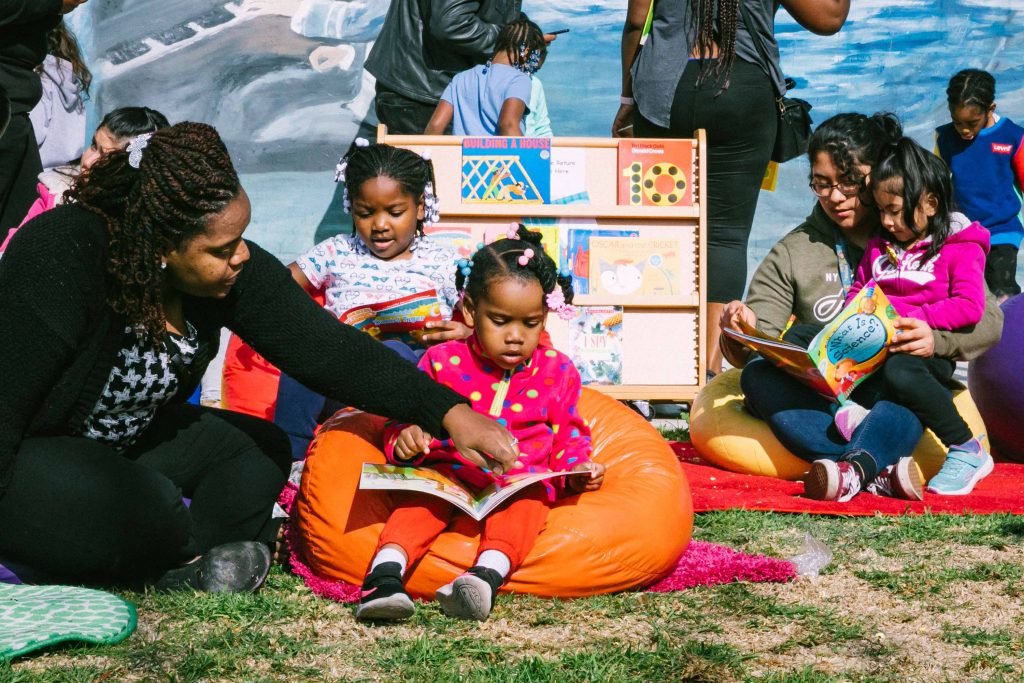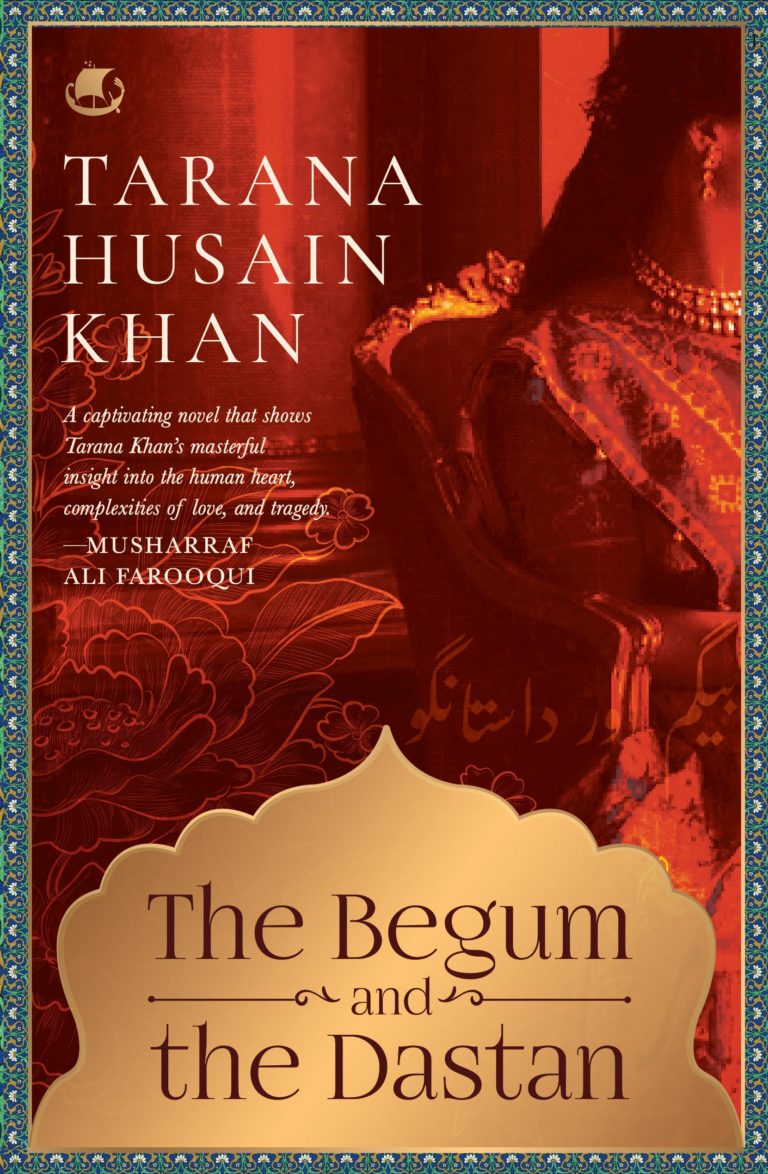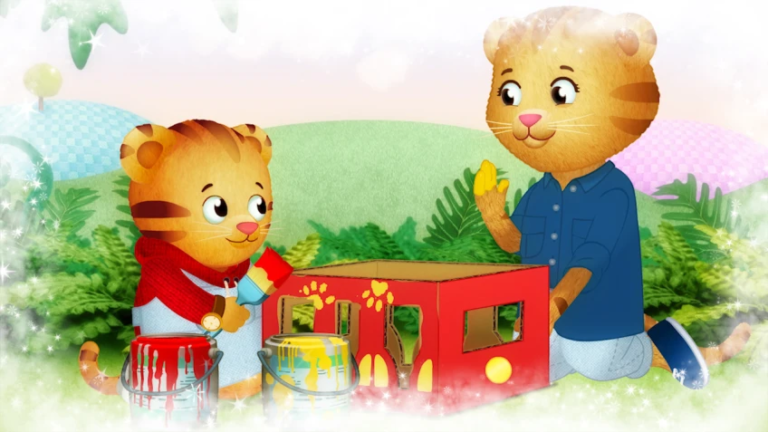Weaving Story Time & Math
By Tarana Khan, Ph.D., and Rosemary Miller, Ed.D.

PBS SoCal families read together with their children. PHOTO COURTESY PBS SOCAL
“Tacos are semicircles,” my 2-year-old announces as we are cuddled on the couch reading “Round Is a Tortilla” by Roseanne Greenfield Thong. The book says tortillas and tacos are round, and the folded crunchy tacos illustrated on the page catch her attention.
When my daughter and I read together, it’s common for us to extend beyond the words on the page. We describe the images by their shapes, colors and sometimes even the sounds we think they would make. Along with helping us make connections to our own lives and experiences, reading together allows us to explore other concepts, such as math, science and art.
Books like “Round Is a Tortilla” make finding the bridge between reading and math easy by encouraging readers to seek round, square and triangular shapes. But any book we choose to read with our little ones can give us the chance to easily weave in conversations about math topics such as counting or patterns.
Advertisement
The National Association for the Education of Young Children (NAEYC) and the National Council of Teachers of Mathematics (NCTM) suggest that preschoolers’ foundational math knowledge is best supported when math becomes holistically integrated with other daily activities and subjects, including literacy. When children see how math can be used in real-world contexts and situations in the books they are reading, they begin to recognize that math is a part of their everyday life. As a result, children’s interest in math may grow and they may become motivated to learn other types of math concepts.
–Tarana Khan, Ph.D.

